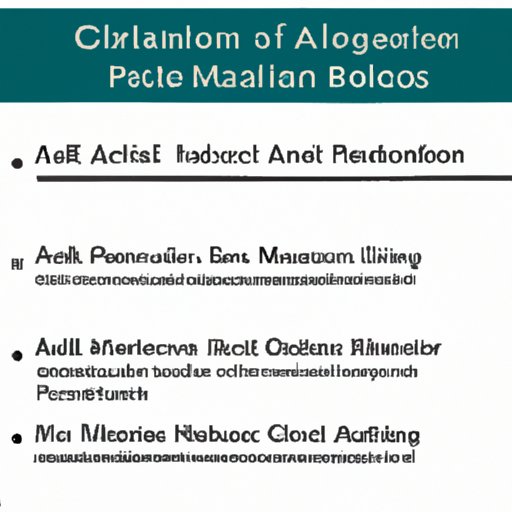
Introduction
Citing books is an essential aspect of academic writing. Proper citation ensures that the sources used in a paper are acknowledged, and it helps readers to locate the original source material. Failing to cite a book correctly can result in plagiarism or erroneous information. In this article, we will provide a comprehensive guide to citing books in APA, MLA, and Chicago referencing styles.
Step-by-Step Guide
A book citation typically includes the author’s name, book title, publisher’s name, year of publication, and edition, among other metadata. Each referencing style may have specific formatting rules, so it’s essential to know the differences between the three styles.
APA (American Psychological Association) Citation Style
APA referencing style is commonly used in the social sciences. Here’s a step-by-step guide on how to cite a book in APA style:
Format: Last name, First Initial. (Year). Book title. Publisher.
Example: Johnson, T. J. (2015). The Sociology of Culture. Routledge.
MLA (Modern Language Association) Citation Style
MLA referencing style is widely used in the humanities. Here’s a step-by-step guide for citing books in MLA style:
Format: Last name, First name. Book title. Publisher, year of publication.
Example: Johnson, T. J. The Sociology of Culture. Routledge, 2015.
Chicago Citation Style
Chicago style is often used in history, social sciences, and humanities. Here is a step-by-step guide for citing books in Chicago style:
Format: Last name, First name. Book title. Publisher, year of publication.
Example: Johnson, Thomas J. The Sociology of Culture. Routledge, 2015.
Tips on How to Make Citing Books Easier
Citing books can be time-consuming and challenging, especially when there are numerous sources. Some tips that can make the process easier include:
– Keeping track of your sources in a reference management software like Zotero, EndNote, or Mendeley.
– Making a habit of noting down all of the necessary citation metadata on a sticky note or notepad while reading the book.
– Seeking clarifications from your instructors or librarians whenever in doubt about citation styles.
– Always double-checking your references before submitting a paper.
Common Mistakes
Because of the importance of proper citations in academic writing, it’s essential to avoid common mistakes that can lead to plagiarism or erroneous information.
Some common mistakes to avoid include:
– Spelling the author’s name incorrectly
– Using an incorrect publication date
– Missing relevant publication details, such as the publisher or place of publication
– Not using italics or underlining when required
Tips on How to Avoid Common Citation Mistakes
To avoid common citation mistakes, it’s essential to:
– Verify citation data from the publisher’s web site or a reliable online database
– Consult the relevant style guide frequently
– Proofread citations and ensure that they’re consistent, correct, and match the referencing style’s guidelines.
In-text Citation Examples
In-text citations help readers know where a piece of information came from within a text. The following are in-text citation examples using the APA, MLA, and Chicago referencing styles:
APA In-text Citations
As Johnson (2015) argues, the sociology of culture affects individuals’ beliefs and values.
MLA In-text Citations
As Thomas J. Johnson notes, “The sociology of culture is the study of the close relationship between culture and society.” (Johnson 25)
Chicago In-text Citations
Johnson argues that the sociology of culture significantly influences individuals’ attitudes and beliefs (2015, 48).
Alternative Formats
Books can be found and cited in various formats, including e-books, audiobooks, and eBooks. Here’s a guide on how to cite books in alternative formats using APA, MLA, and Chicago styles:
APA Citation Style for E-books
Format: Last name, First Initial. (Year of Publication). Book Title [ePub version]. Publisher.
Example: Johnson, T. J. (2015). The Sociology of Culture [ePub version]. Routledge.
MLA Citation Style for E-books
Format: Last name, First name. Book title. Publisher, year electronic edition published. Database or URL.
Example: Johnson, T. J. The Sociology of Culture. Routledge, 2015. ProQuest Ebook Central.
Chicago Citation Style for E-books
Format: Last name, First name. Book title. Publisher, year of publication. Database or URL.
Example: Johnson, Thomas J. The Sociology of Culture. Routledge, 2015. ProQuest Ebook Central.
Formatting Guidelines
Each citation style has its unique formatting guidelines for references. Here’s a brief guide on how to format a book citation using APA, MLA, and Chicago referencing styles:
APA Formatting Guidelines
- Author’s last name, first initial.
- (Year of publication).
- Title of the book.
- Publisher.
MLA Formatting Guidelines
- Author’s last name, first name.
- Title of the book.
- Publisher, year of publication.
Chicago Formatting Guidelines
- Author’s name.
- Title of the book.
- Place of publication: Publisher, year of publication.
Frequently Asked Questions
Q: How many authors do I include in a citation?
A: The number of authors you include varies based on the citation style. APA citation style requires including the names of all authors, while MLA only mandates listing the first author’s name, followed by et al.
Q: Can I use an abbreviated publisher name in my citation?
A: Yes, you can use an abbreviated publisher name in your citation. However, you should ensure that the abbreviation is widely recognized and commonly used.
Conclusion
In conclusion, citing books is an essential aspect of academic writing, and proper citation helps to avoid plagiarism and provide crucial information to readers. By following the guidelines provided in this article, you can effectively cite books using APA, MLA, and Chicago referencing styles. Remember, citation data accuracy is necessary, so take the time to double-check and ensure that you’re following the citation style guidelines recommended by your instructor. With these tips, you can make citation easier and less stressful, and you can ensure a well-crafted academic paper.




